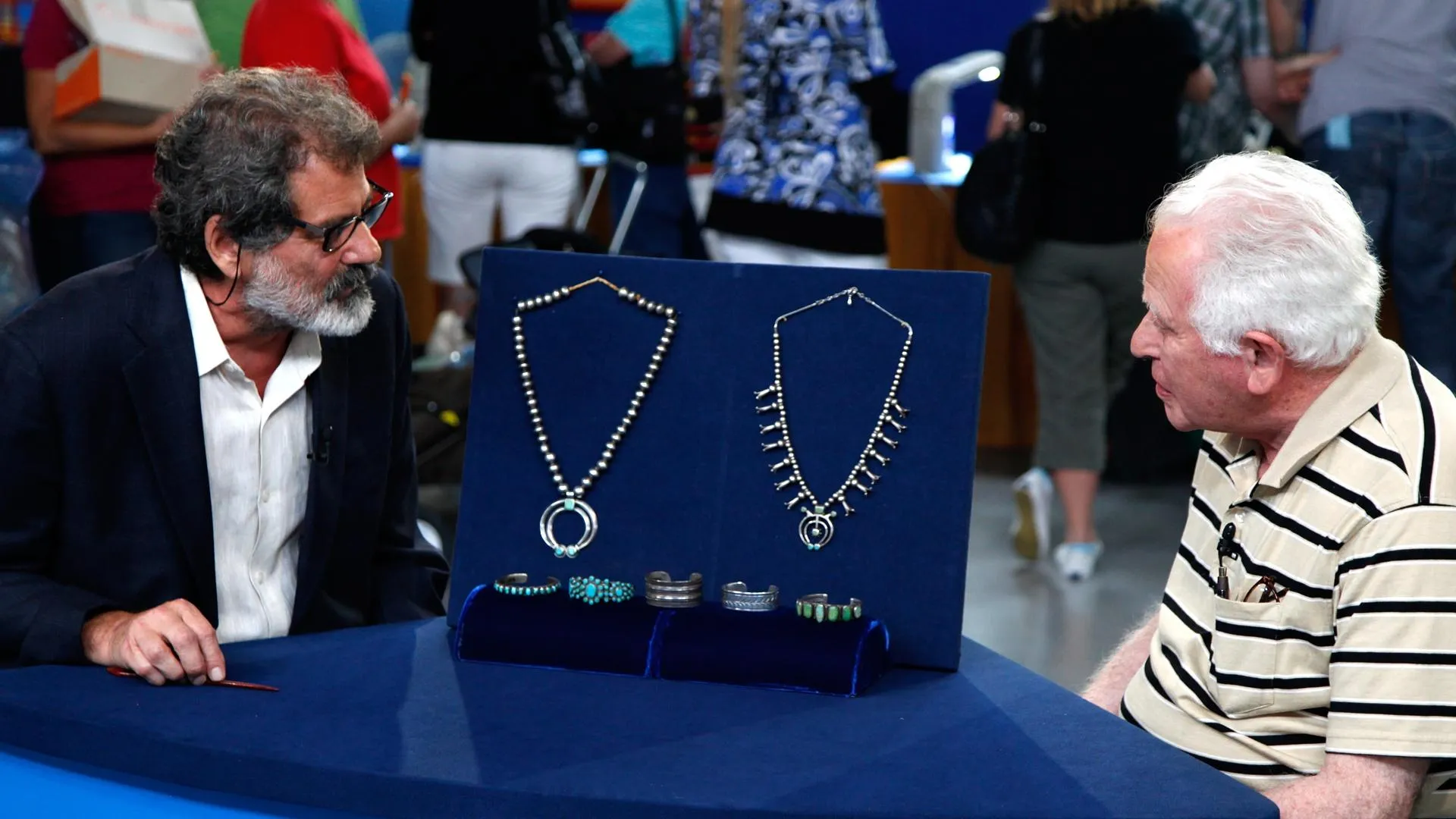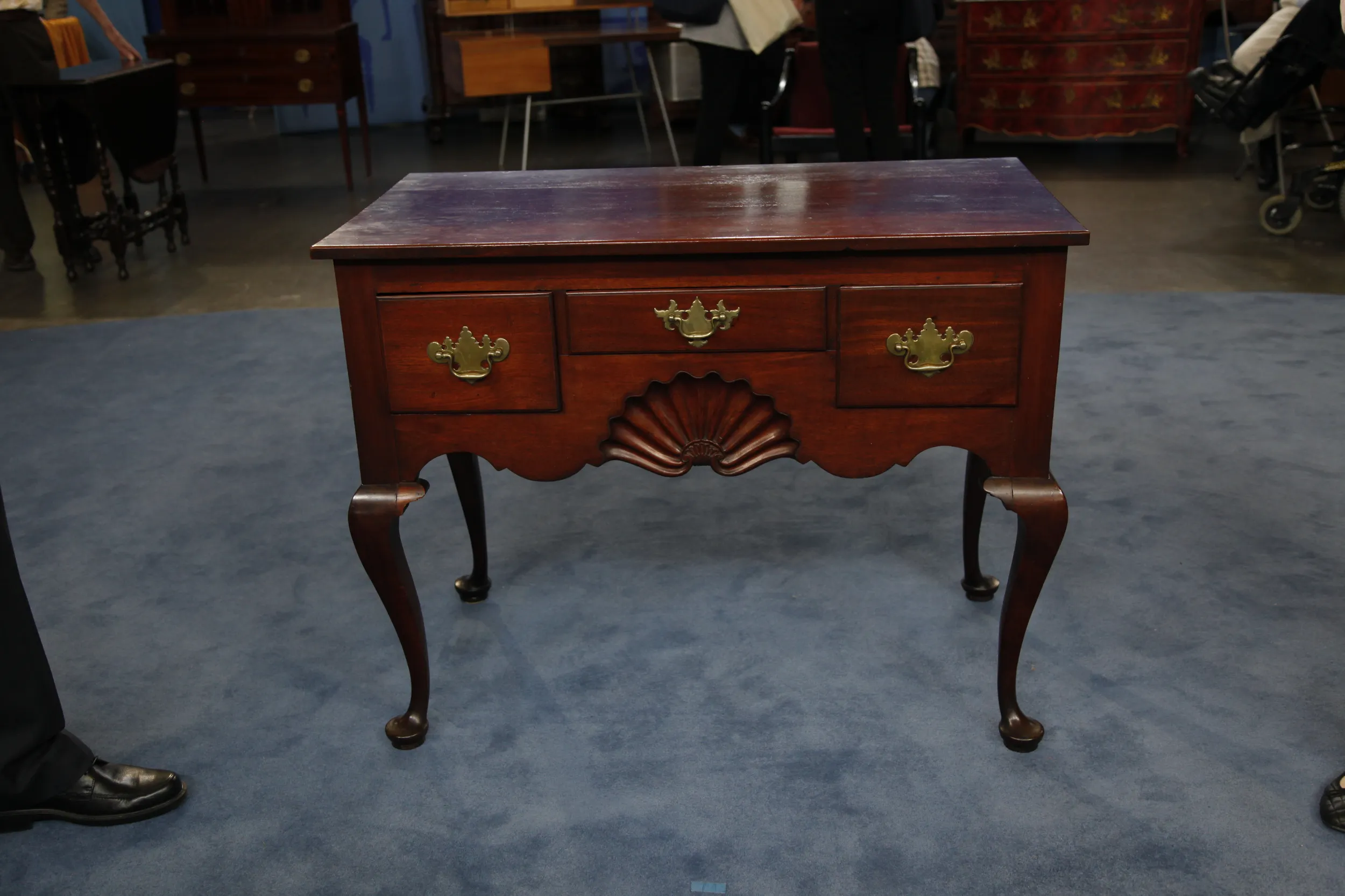GUEST: We bought it at an auction down on the Cape. We bought it for function, to use, and we thought it might be old, but we don't know.
APPRAISER: How old do you think it is?
GUEST: If I were to guess, I'd say the late 1800s.
APPRAISER: It's a piece that I spotted from across the hall. It was instantly recognizable as a piece of Newport, Rhode Island, furniture from the 18th century. It was made during the Queen Anne period, dates to about 1770. The principal characteristic that identifies it as Newport is this carved scallop shell. This is something that they did in Newport and nowhere else. Another characteristic that identifies it as Newport is the shape of the apron and the wonderful bold cabriole to the legs. Now, in the 18th century, Newport was a center for shipping. They exported furniture to all parts of the colonies. And they developed a construction characteristic that made shipping case pieces like this much easier: they made the legs detachable. A piece of furniture made in any other region at the time would have one piece of wood from top to bottom cut from a solid block of wood. In Rhode Island, they constructed these pieces differently where the leg, which has a pin running up into the case, was detachable. So they could ship the piece with the legs stored inside and then install them and glue them in when it arrived at its destination. If I remove the drawer, we can see inside this leg coming up, and it ends right there. So it's a unique construction characteristic that we only find in Rhode Island furniture, and that's very desirable to collectors of Rhode Island furniture. It's larger than what we would expect a dressing table to be-- larger by a good six or eight inches-- and if we examine it carefully, we determine that it's actually the base section for a highboy, or a high chest. So originally this had another case of drawers on top, and it stood about seven feet high. It's not unusual for these pieces to have gotten separated through the years. It happens a lot. They would commonly take the base and put a top on it and turn it into a dressing table or a server, which is what happened here. The piece is constructed of fine-quality mahogany. Now, there were two families of cabinet makers working in Newport in the 18th century: the Goddards and the Townsends. And collectively, we call their furniture Goddard-Townsend furniture. And this is a piece of Goddard-Townsend furniture.
GUEST: It is?
APPRAISER: They are rare and highly desirable. When did you buy it?
GUEST: About eight years ago.
APPRAISER: And do you remember how much you paid?
GUEST: $3,000.
APPRAISER: This is a piece that I would expect at auction would sell today for $3,500 to $5,000 to a collector of...
GUEST: Wonderful!
APPRAISER: ...Rhode Island furniture.
GUEST: Great, it's good to know!
APPRAISER: It's interesting to note that in January of 2012, a wonderful, original Goddard-Townsend school highboy, the finest example, sold for $3.5 million.
GUEST: Wow, I wish we had the top.
APPRAISER: I wish you did as well.









